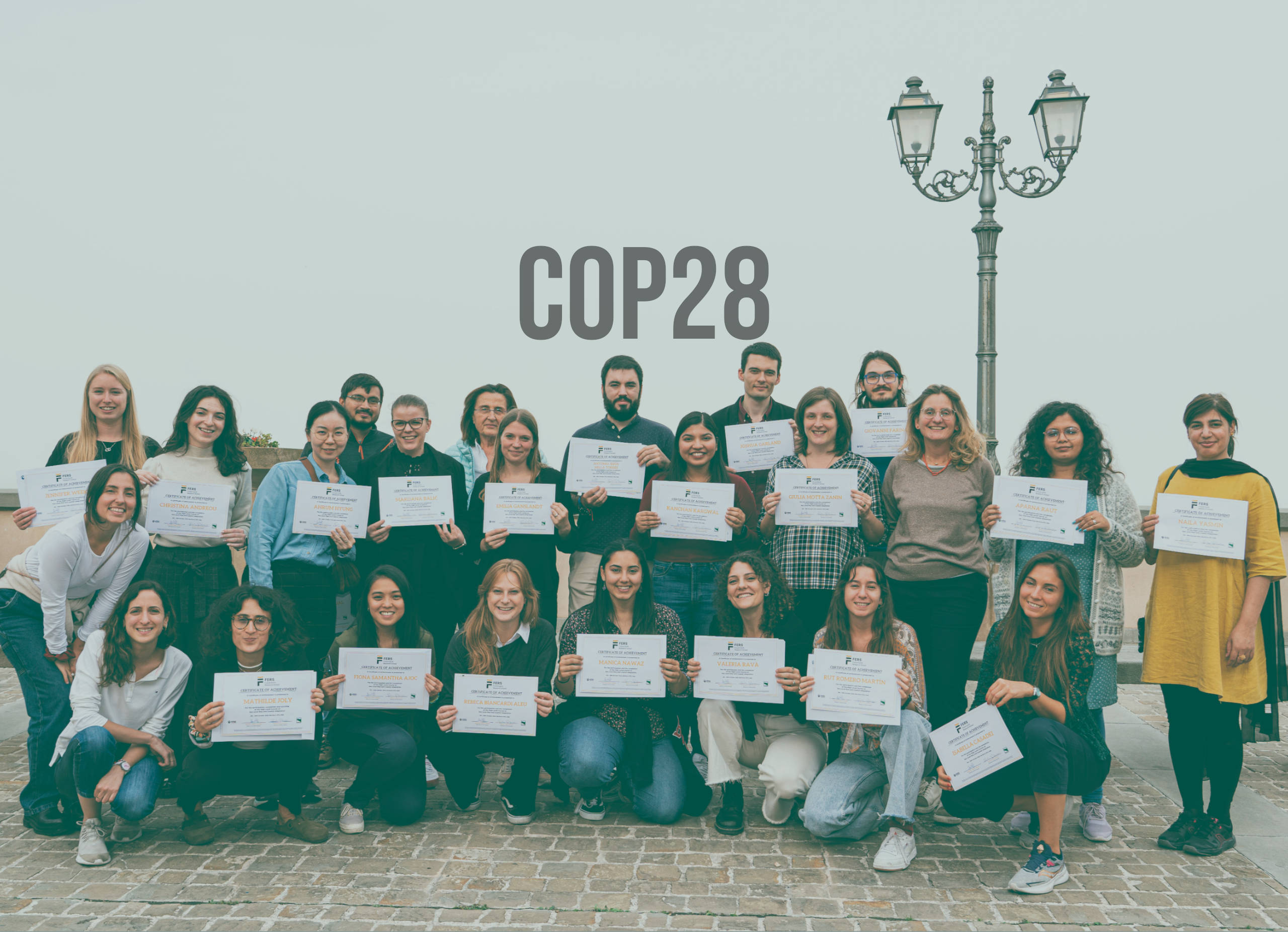Glaciers are a symbol, they portray climate change in the collective imaginary and represent the balance of nature. Photographer Fabiano Ventura describes the iconic power of mountains and the multifaceted relationship between art and science. He also explains why he sees an opportunity emerging from the COVID19 pandemic, whereby the priorities and value systems that led to the current health and environmental crisis are being challenged.
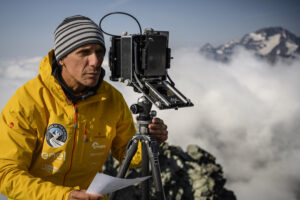
2019 Riccardo Scotti – © F. Ventura
“Everyone wants to return to ‘normal’ but we haven’t understood that it is that very ‘normal’ that has brought about the current crisis”, explains Fabiano Ventura, creator and director of On the Trail of Glaciers, a project that unites art and science to create more awareness of the effects of anthropogenic climate change. Fabiano’s deep understanding of the essential role of science in the fight against climate change has led him to see the COVID-19 pandemic as a chance to reflect on our value systems and development model. Not only must we listen to scientists during the pandemic, but this must continue into the future so that we can create the basis for a sustainable world.
What makes “On the trail of glaciers” an important project?
As a photographer, I chose to focus on glaciers because they represent the problem of climate change in the collective imaginary. Telling these stories is important because it can help sensitize public opinion on the need to safeguard natural resources for future generations and because it places an emphasis on the importance of listening to scientific evidence.
It isn’t just about the actual glaciers but rather the balance of nature for which glaciers are merely a symbol
With the “On the trail of glaciers” project I am bringing together comparative photography and scientific research in an effort to analyze the effects of climate change by looking at variations in glaciers. With six expeditions over the course of ten years, the project has produced both glacial measurements and new photos from the exact same vantage point as those taken by other photographers and explorers at the end of the 19th and beginning of the 20th century. Last summer we began the Alpi 2020 part of the project with a pre-expedition to the Mont Blanc, Monte Rosa and Bernina. In the summer of 2020, we hope to resume our work, with the aim of creating the largest archive of photographic comparisons in the Alps and collecting scientific data on the status of Alpine glaciers.
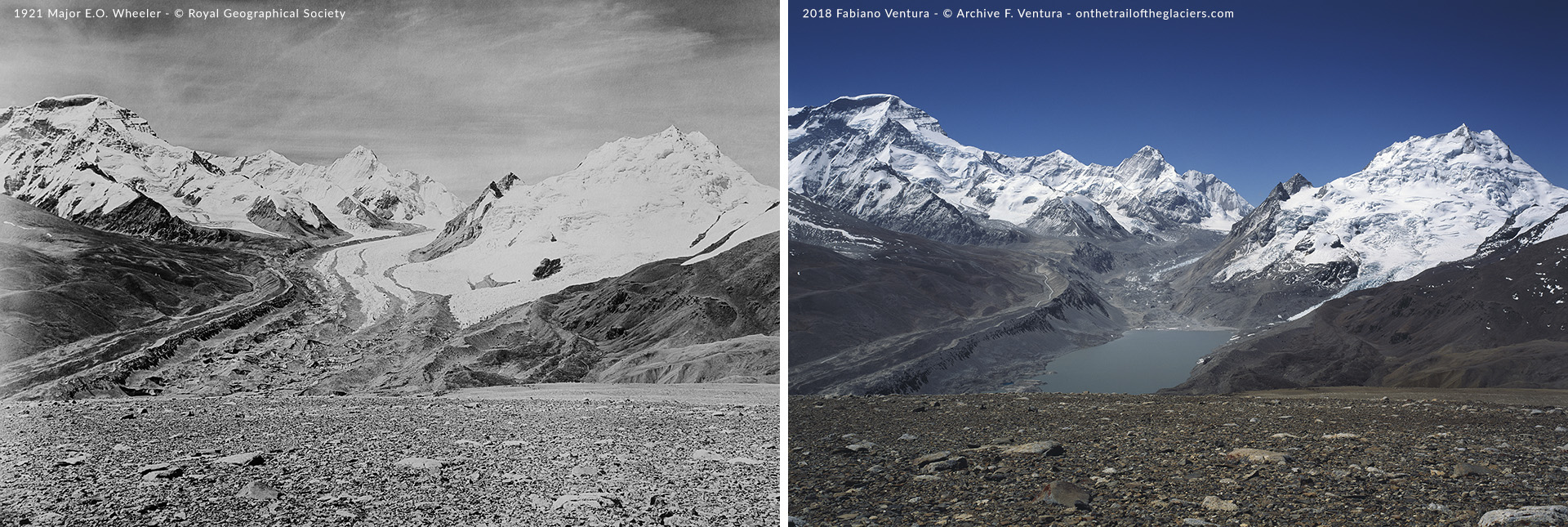


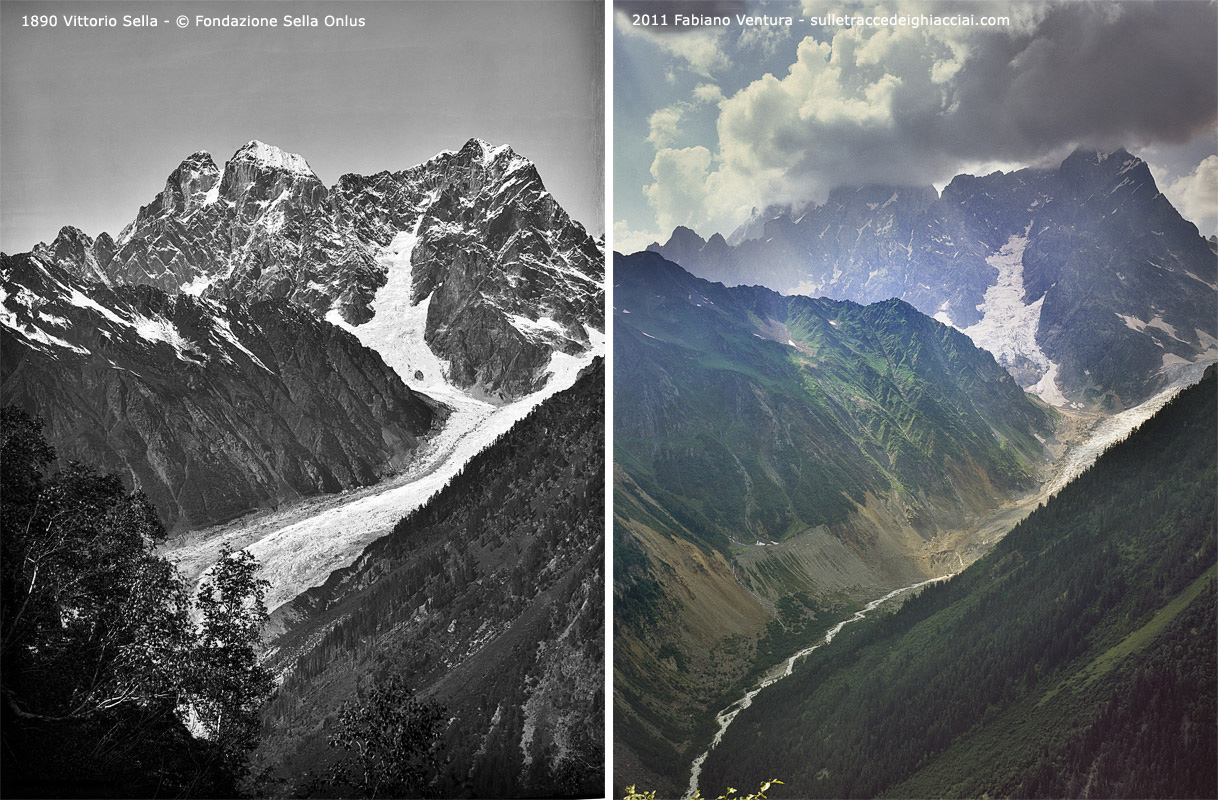
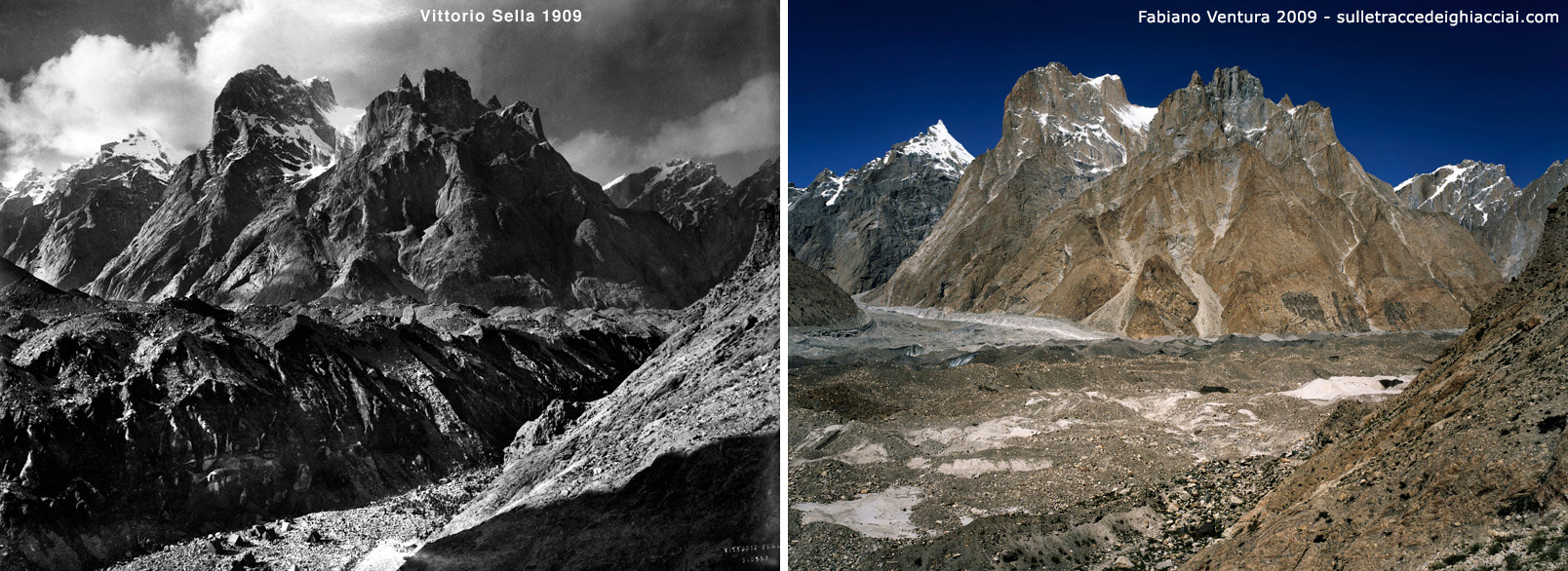
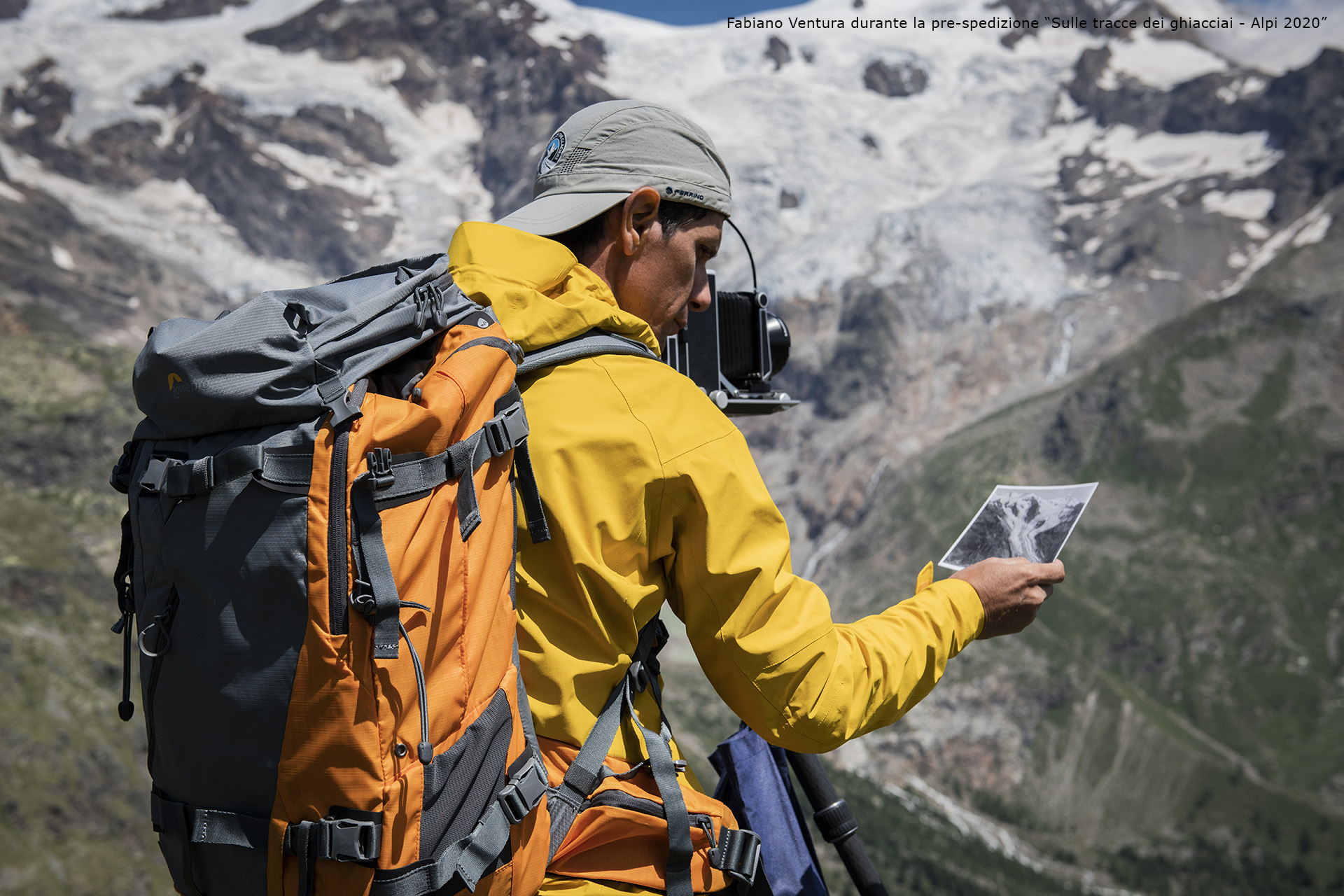

What is the scientific value of comparative photography?
The union of art and science is fundamental and I am building on a strong Italian tradition of using photography as an instrument of scientific research and a means for spreading its findings. The strong impact of photographs can help create more awareness of the effects of anthropogenic climate change and bring the results derived from scientific investigation to the foreground.
Therefore, the relationship with science is multifaceted. As a landscape photographer, I love the beauty of nature and I take a very technical approach to photography so as to create captivating images. However, this project is not just about portraying beauty, I also want my images to carry a message. This is the goal of my project, fuelled by a desire to value scientific research. I believe science is a service for humanity and that unfortunately it is often overlooked and not valued enough.
There is a reciprocal relationship: science helps photography by giving it authority in its goal of spreading information and photography helps science, because graphs and raw data are clearly less attractive than a striking image
Our expeditions all involve scientists and researchers so that they can continue to generate or update quantitative data by performing measurements on the glaciers we visit. This can then be added to the qualitative data produced through comparative photography. In this way there is a reciprocal relationship: science helps photography by giving it authority in its goal of spreading information and photography helps science, because graphs and raw data are clearly less attractive than a striking image. Pictures speak louder than words and even more so if they are associated with objective data. The union of art and science is something that has been growing over the last few years and it is a very effective tool for raising awareness and understanding of environmental issues.
What can the COVID-19 pandemic teach us about our relationship with science?
We have been struck by a pandemic after decades of warnings by researchers that told us this was going to happen. The COVID-19 crisis has forced us to accept that science is important. Now we all seek the advice of scientists, whereas just a couple of months ago we weren’t ready to listen to them. For this reason, my project is even more relevant today. During my public events, I often claimed that we were creating the conditions for a pandemic through our destructive actions such as deforestation, pollution, reckless use of land, and overconsumption of resources. These are all problems that I talk about through my project, giving a clear image of their consequences: the melting of glaciers. Through the use of aesthetic and impactful images, glaciers become a means with which to communicate certain values. In fact, it isn’t just about the actual glaciers but rather the balance of nature for which glaciers are merely a symbol. Today the cryosphere is the symbol of climate change just as in the 1980s it was the mushroom cloud and hence the impacts of nuclear proliferation on our environment.
The COVID-19 crisis has forced us to accept that science is important.
Can the current crisis become an opportunity for positive change?
It has to become an opportunity. We must find a development model that is different from the one we currently have in place, which has failed and COVID-19 is the proof of that failure. We need to create a society with different values.
Nature has always had an equilibrium but today planet Earth has to factor in a species that is so spread out, numerous and impactful that it is altering the planet’s balance. We have to realize that we are a part of this ecosystem and that we are not an external element to nature. We are part of nature and hence have to fit into its equilibrium. COVID-19 is showing us how fragile we are. Unfortunately, we are being forced into this realization with a critical situation and the virus has completely altered our world system. At the same time, scientists have been telling us about climate change for over 40 years and that it will bring catastrophic change. Everyone wants to return to “normal” but we haven’t understood that it is that very “normal” that has brought about the current crisis.
The COVID-19 pandemic is an opportunity to reflect on our value systems. We live in a world of superfluous needs and economic profit over the wellbeing of people. We must start the post-COIVD-19 battle now and create the basis for a sustainable world. What is really important is wellbeing and not profit.




